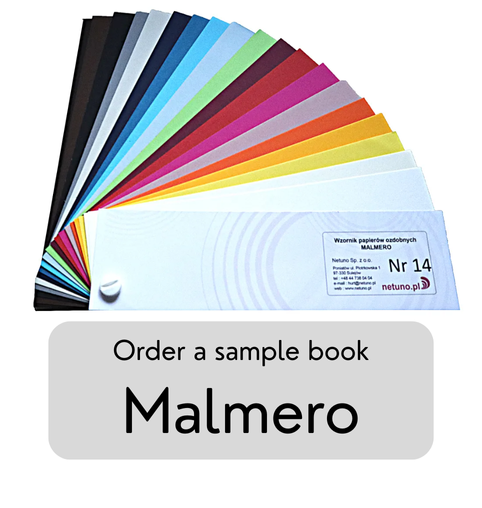-
-
News
-
18 likes
-
3183 views
-
0 comments

Wprowadzenie
W dzisiejszym cyfrowym świecie może się wydawać, że papierowe dokumenty tracą na znaczeniu. Jednak w rzeczywistości wiele firm nadal polega na dokumentach fizycznych do prowadzenia działalności. Ważne jest, aby te dokumenty były prawidłowo przechowywane i archiwizowane, aby zapewnić łatwy dostęp, bezpieczeństwo i zgodność z przepisami. Segregatory są doskonałym narzędziem do porządkowania i organizacji dokumentów, a także do ich ochrony przed uszkodzeniem i utratą.
Rodzaje segregatorów
Na rynku dostępnych jest wiele różnych rodzajów segregatorów, z których każdy ma swoje zalety i wady. Do najpopularniejszych należą:
- Segregatory kartonowe: Są tanie i lekkie, ale mogą być mniej trwałe niż inne typy segregatorów.
- Segregatory plastikowe: Są bardziej trwałe niż segregatory kartonowe i odporne na wilgoć.
- Segregatory wiszące: Są przeznaczone do montażu na szafkach lub ścianach, co oszczędza miejsce na biurku.
Wybór odpowiedniego segregatora
Przy wyborze segregatora należy wziąć pod uwagę kilka czynników:
- Ilość i rodzaj przechowywanych dokumentów: Jeśli masz dużo dokumentów, będziesz potrzebować większego segregatora. Jeśli przechowujesz delikatne dokumenty, możesz potrzebować segregatora z przegródkami lub koszulkami ochronnymi.
- Częstotliwość dostępu do dokumentów: Jeśli często korzystasz z dokumentów, będziesz potrzebować segregatora, który jest łatwy do otwierania i zamykania.
- Potrzeba przenoszenia segregatora: Jeśli musisz często przenosić segregator, wybierz lekki model z wygodnym uchwytem.
- Estetyka i dopasowanie do przestrzeni biurowej: Segregatory dostępne są w różnych kolorach i wzorach, więc możesz wybrać taki, który pasuje do wystroju Twojego biura.

Organizacja dokumentów w segregatorach
Istnieje wiele różnych sposobów organizacji dokumentów w segregatorach. Najlepszy sposób dla Ciebie będzie zależał od Twoich indywidualnych potrzeb i preferencji. Oto kilka popularnych systemów segregacji:
- Alfabetyczny: Ten system jest idealny dla dokumentów, do których często musisz uzyskiwać dostęp według nazwy.
- Chronologiczny: Ten system jest przydatny dla dokumentów, które muszą być uporządkowane według daty.
- Tematyczny: Ten system jest przydatny dla dokumentów dotyczących tego samego tematu.
- Projektowy: Ten system jest przydatny dla dokumentów związanych z określonym projektem.
- Mieszany: Możesz użyć kombinacji różnych systemów segregacji, aby dopasować je do swoich potrzeb.
Etykietowanie segregatorów
Czytelne i przejrzyste etykiety na segregatorach są niezbędne do szybkiego i łatwego znajdowania potrzebnych dokumentów. Podczas etykietowania segregatorów należy pamiętać o następujących wskazówkach:
- Używaj krótkich i zwięzłych opisów.
- Stosuj spójny system etykietowania dla wszystkich segregatorów.
- Używaj kolorów i symboli, aby ułatwić identyfikację.
- Możesz użyć etykietarki lub oprogramowania do tworzenia etykiet.
Ochrona dokumentów w segregatorach
Istnieje kilka sposobów ochrony dokumentów w segregatorach przed uszkodzeniem i utratą:
- Stosowanie koszulek ochronnych: Koszulki ochronne chronią dokumenty przed brudem, wilgocią i rozdarciem.
- Używanie przekładek między dokumentami: Przekładki pomagają oddzielić dokumenty i zapobiegają ich sklejaniu się.
- Przechowywanie segregatorów w odpowiednich warunkach: Przechowuj segregatory w suchym i chłodnym miejscu, z dala od bezpośredniego światła słonecznego.
Archiwizacja dokumentów w segregatorach
Niektóre dokumenty muszą być archiwizowane przez określony czas z powodów prawnych lub regulacyjnych. Podczas archiwizowania dokumentów w segregatorach należy pamiętać o następujących kwestiach:
- Określ, które dokumenty należy zarchiwizować: Zapoznaj się z przepisami i regulacjami dotyczącymi archiwizacji dokumentów w Twojej branży.
- Wybierz odpowiednie pudełka i teczki archiwalne: Pudełka i teczki archiwalne są wykonane z materiałów odpornych na działanie czasu i chronią dokumenty przed uszkodzeniem.
- Zastosuj prawidłowe zasady archiwizacji: Dokumenty powinny być archiwizowane w sposób uporządkowany i łatwy do odszukania.
Korzyści z korzystania z segregatorów
Korzystanie z segregatorów do przechowywania i archiwizacji dokumentów ma wiele zalet:
- Zwiększona produktywność i oszczędność czasu: Łatwiejszy dostęp do potrzebnych dokumentów może zaoszczędzić czas i zwiększyć produktywność.
- Łatwiejszy dostęp do dokumentów: Segregatory umożliwiają uporządkowanie i organizację dokumentów, co ułatwia ich znajdowanie.
- Zabezpieczenie dokumentów przed uszkodzeniem i utratą: Segregatory chronią dokumenty przed brudem, wilgocią, kurzem i uszkodzeniem.
- Profesjonalny wizerunek firmy: Dobrze zorganizowane i uporządkowane segregatory mogą wywrzeć pozytywne wrażenie na klientach i partnerach biznesowych.

Najczęściej zadawane pytania
1. Jakie są najlepsze rodzaje segregatorów do przechowywania dokumentów firmowych?
Najlepszy rodzaj segregatora dla Twojej firmy będzie zależał od Twoich indywidualnych potrzeb. Należy wziąć pod uwagę takie czynniki, jak ilość i rodzaj przechowywanych dokumentów, częstotliwość dostępu do dokumentów oraz potrzebę przenoszenia segregatorów.
2. Jak często należy porządkować dokumenty w segregatorach?
Częstotliwość porządkowania dokumentów w segregatorach będzie zależała od ilości dodawanych dokumentów oraz od tego, jak często korzystasz z segregatorów. Ogólnie rzecz biorąc, dobrym pomysłem jest regularne przeglądanie segregatorów i usuwanie niepotrzebnych dokumentów.
3. Jakie są najlepsze sposoby etykietowania segregatorów dla łatwej identyfikacji?
Etykiety na segregatorach powinny być czytelne i zwięzłe. Stosuj spójny system etykietowania dla wszystkich segregatorów i używaj kolorów lub symboli, aby ułatwić identyfikację. Możesz użyć etykietarki lub oprogramowania do tworzenia etykiet.
4. Jak chronić dokumenty w segregatorach przed wilgocią i kurzem?
Przechowuj segregatory w suchym i chłodnym miejscu, z dala od bezpośredniego światła słonecznego. Stosowanie koszulek ochronnych i przekładek między dokumentami może również pomóc w ich ochronie.
5. Jakie są przepisy dotyczące archiwizacji dokumentów w segregatorach?
Przepisy dotyczące archiwizacji dokumentów różnią się w zależności od kraju i branży. Zapoznaj się z przepisami i regulacjami dotyczącymi archiwizacji dokumentów w Twojej firmie.
Podsumowanie
Segregatory to niezbędne narzędzie do przechowywania i archiwizacji dokumentów w każdej firmie. Wybierając odpowiednie segregatory i organizując dokumenty w przemyślany sposób, można poprawić produktywność, zapewnić bezpieczeństwo dokumentów i stworzyć profesjonalny wizerunek firmy.







 Polska
Polska
 Deutschland
Deutschland
 France
France
 Romania
Romania
 Česká republika
Česká republika
 Italia
Italia

















Comments (0)